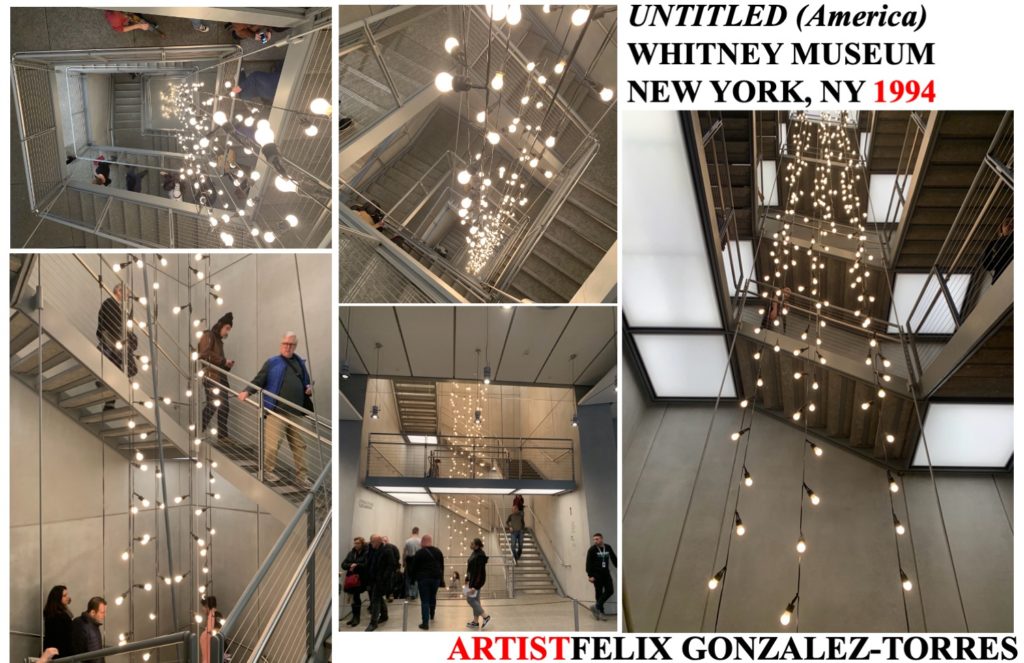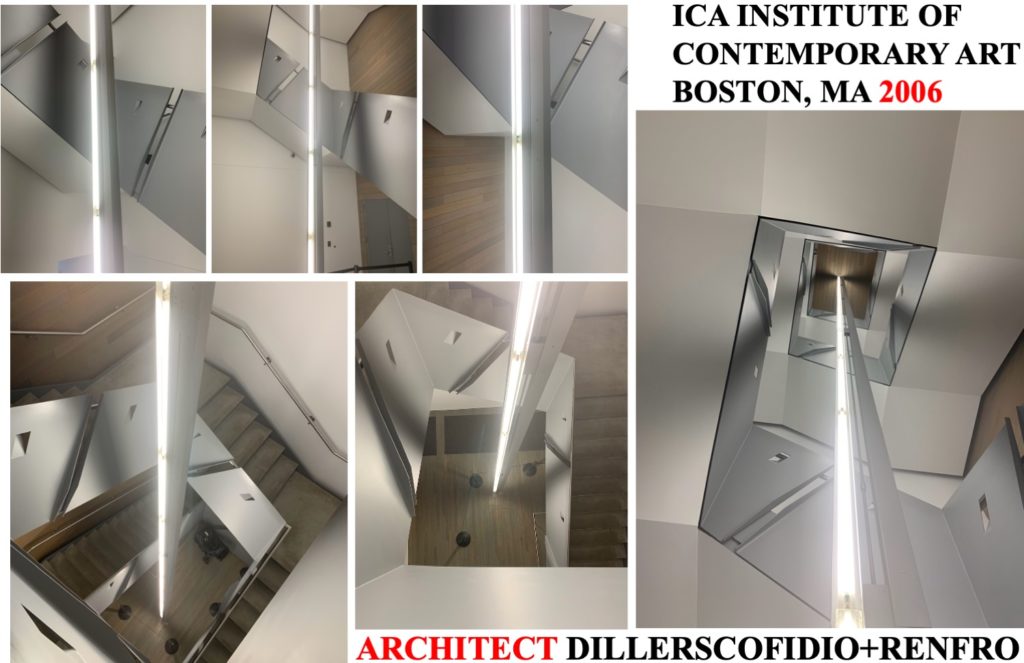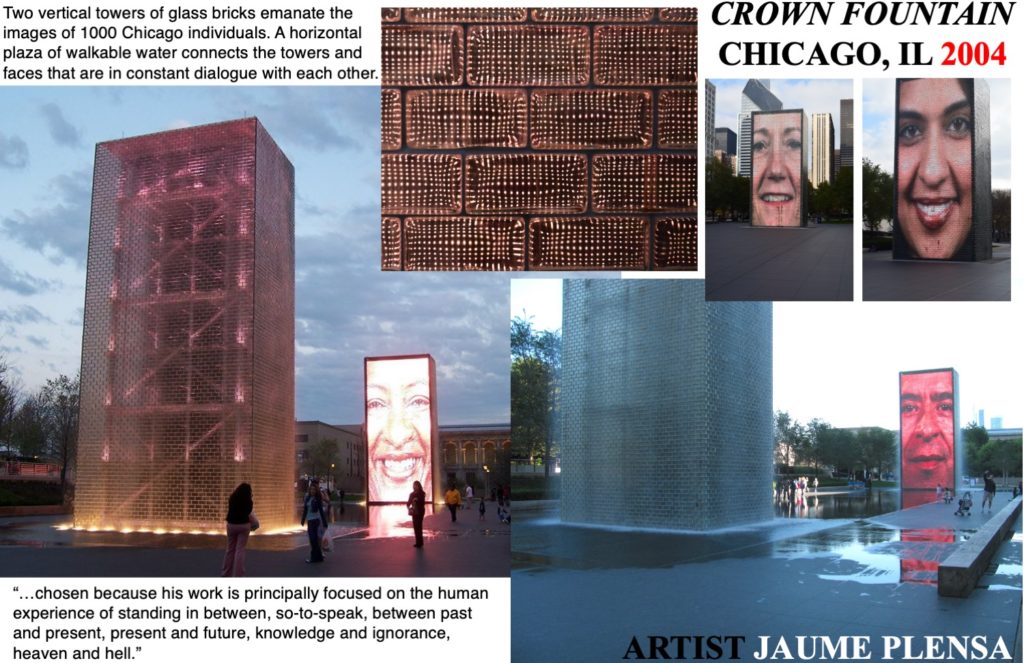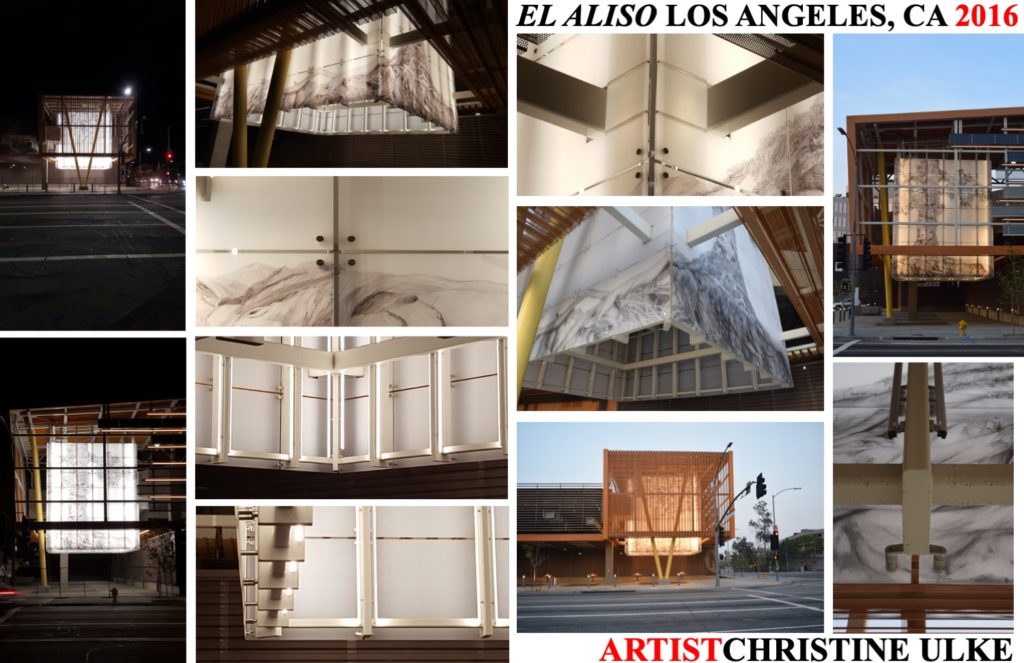For a long time I’d been thinking of my work as potential architecture. I’ve always been convinced by the idea that to make new art you have to make new space.
~ Anish Kapoor
mills studio Statement
The DTS Project House intentionally and accidentally creates situations for “artists” to create potentially unique “artworks” – architecture can make universal artistic themes specific. The DTS architecture is not a neutral background for the presentation and experience of art and design, but instead provides spatial and conceptual opportunities for site specific pieces integrated into the architecture. This integration is intended to make the site specific “artworks” part of the everyday experience of the DTS Project House without sacrificing recognition of the artworks as artworks in themselves apart from the architecture.
Site specific “artworks” are intended to be more ambitious than just craft or interventions and are intended to embrace but also expand narrow definitions of artworks, such as objects created by artists. In addition to objects, it is envisioned that artists, makers, programmers, and engineers will explore artworks that are events, experiences, or documentation of experiences the DTS Project House provides. It is hoped that the boundaries of art, design, architecture, and engineering are blurred. What is important is that these pieces alter or intensify the perception of the of the DTS Project House as a place and as a spatial experience.
The DTS Project House provides differing spatial conditions and conceptual opportunities for integrating site specific “artworks”. Among the situations created by the DTS architecture, is the ability to experience a single artwork from many multiple and differing perspectives and contexts – from near and far, from oblique to elevational views, from above and from below, and from all sides. This experience can be shared simultaneously by multiple inhabitants and guests at different locations or by a single individual as they move about the house. mills studio considers the creation of pieces that address a person’s ability to change their location and thus perspective in relation to the artwork among the most intriguing opportunities the DTS Project House offers for site-specific artworks. There is the potential and need to express and communicate an entire reality – nothing can be hidden or obscured.
mills studio approaches the locations, purposes, and aesthetics with a definite bias toward architectural sensibilities. Those engaged to make proposals for site-specific pieces will include both those that tend toward agreement and toward opposition to this bias. Those engaged are free to be persuaded by or make proposals opposed to this bias. Some of the spatial situations mills studio has identified as opportunities for site specific “artworks” provide the opportunity to fulfill primarily artistic purposes but also secondarily functional purposes, such as providing lighting or acting as a space divider. mills studio also envisioned situations for site specific “artworks” employing the materials of architecture such as light, air and sound, color, industrial materials and processes, and technology.
There are two differing approaches to the working relationship between artists and architect. In one scenario the architect provides a fully defined context for the artist to make an artwork and the goal is a high-quality finished artwork. In a second scenario the goal is equally process and product. The process of the artist and architect interacting in a way that each’s sensibilities affect the ultimate resolution of both the architecture and the art in way that each retains its individual identity and simultaneously they are thought of as inseparable – in other words a successful marriage. The successful marriage scenario is intended for the DTS Project House.
SITE SPECIFIC INSTALLATIONS
The Owners have engaged artists, programmers, and makers to provide proposals for commissioned site-specific “artworks” integrated into the architecture and experience of the DTS Project House. In this context, “artworks” has an expansive, almost unlimited definition that includes what may be considered as events or experiences. What is most important is that these site-specific “artworks” have a symbiotic relationship with the architecture – the “artworks” alter and shape the architectural experience and simultaneously are shaped by the architectural context. In this regard, the “artists” must be involved in the design process at points where the architecture is sufficiently defined that it can shape the artworks, but not so defined that its final resolution cannot be affected by the proposed artworks.
These artists and makers bring different sensibilities and perspectives to the architecture that will accentuate and intensify the DTS experience by either complementing or opposing the architecture. mills studio has documented various aspects of the architecture and specific spaces that it believes provide opportunities for site-specific “artworks”, but those engaged are encouraged to identify their own architectural situations to exploit and their own aesthetic outcomes. It is hoped that specific and unique architectural situations will inspire specific implementations of universal themes.
The commissioned site-specific “artworks” are intended to be different than the artistic inspired implementations by mills studio. These implementations inspired by artists work or specific artworks are artistic resolutions of functional problems and architectural themes. They are part of the architecture with an architect’s sensibilities and are not artworks in themselves apart from the architecture. The site-specific “artworks” are intended to be enhanced and shaped by the architecture, but conceptually stand on their own as “artworks” apart from the architecture.
Although an artist or a maker may propose a site-specific artwork or event, it may not be the proposer who implements the piece or experience. Although some of the proposed pieces rely on the technique and hand of the artist, many of the proposed “artworks” are conceptually based in a way that does not rely on technique, but instead rely on technological expertise and competency and the wisdom of the crowd.
SHAFT
ARCHITECTURAL LOCATION / CONTEXT
mills studio identified the shaft like location for what artist Mads Christensen dubbed the “Chandelier” because it provided the opportunity for a single object or event to be experienced from many multiple perspectives, especially in elevation. The location is a smallish square space in plan enclosed by different configurations of opaque and transparent and nonexistent surfaces at the various floor levels. The qualities of the space and its enclosing surfaces change depending on the time of day and time of year, such as the existence and quality of the filtered light through the rock filled gabion wall. The enclosed space extends thirty to forty feet in height from the main level floor up past the upper level and intermediate level to the underside of the main sloped roof. The nature of the site-specific piece will determine the actual perceptible height of the “shaft.”
The location is experienced upon arrival and departure from the house and property. It is an integral experience of everyday use of the house, such as going to and from the powder room. You see the space from a distance as soon as you enter the gate to the motorcourt and from all along the glass floor you begin to see the shaft like space extends downward to below, but you cannot see where it ends. You experience the space from close-up as you either walk down the public exterior stair along the east side of the property or down the interior private “back stair”. When at the top of the interior stair you can look down on the space and as you descend the stair you see the space in different elevations as you change position on the stairs. You see the space and its various surfaces directly without any “filter” between you and the space, you see the space through glass, and you momentarily lose connection with space behind opaque surfaces – the context of how you dynamically interact with the space changes as you change position in plan and elevation.
On the Main Level the space can be made invisible except when directly underneath the “shaft” or a site-specific piece could make you aware of the “shaft” from the entire Main Level by extending below the ceiling, emanating light from the shaft, of using the Main Level floor plane to extend perception of the “shaft.” The experience of being directly underneath the shaft will be dramatically different depending on if the site-specific piece is on the surfaces of the “shaft” or if the piece hangs within the shaft. Again, the Main Level floor plane could be used to locate one within the space of the shaft as opposed to standing underneath the shaft and looking up into the space.
The shaft like location provides numerous subtlely different contexts and it must be determined if and how a site-specific piece ignores or embraces these varying and changing contexts. It must be determined if the piece is primarily a daytime or nighttime piece or embraces both equally. It must be determined if the piece is experienced statically from a single location and vantage point or more dynamically from multiple locations and perspectives. It must be determined if the surfaces of the space are the “artwork” or serve as background for a “sculptural” piece hanging free from the enclosing surfaces. Like most of the locations mills studio has identified as opportunities for site specific artworks, this location provides the opportunity to explore, express, and focus on a myriad of different themes and concerns. Also. like most of the locations mills studio has identified, the architecture of this location forces the maker to confront and propose how art can and should or should not interact with architecture and space.
“CHANDELIER”
Coming Soon Coming Soon Coming Soon Coming Soon Coming Soon Coming Soon Coming Soon Coming Soon Coming Soon Coming Soon Coming Soon Coming Soon Coming Soon Coming Soon Coming Soon Coming Soon
.
LIGHT WELLS
ARCHITECTURAL LOCATION / CONTEXT
On the Lower Garage Level, adjacent to the motorcourt, a “lightwell” exists at each end of the pool glass floor. Architecturally, the “lightwells” are intended as large-scale “light fixtures” to focus natural and artificial light on the pool below, provide nighttime lighting for the visual privacy from neighbors, and serve as “guardrails” enclosing the glass floor at each end. The “lightwells extend down through the glass pool floor and hang above the upper level. On the Upper Level the lightwell hangs directly above you as you stand at the end of the pool at the “front door”. Depending on their final resolution, one can look up through the lightwell to the open sky above with the same ability to do so at the second “lightwell” at the other end of the pool. When swimming in the pool, the two “lightwells” hang down, suspended at either end of the pool helping define the pool’s urban enclosure spatial qualities.
There is the opportunity to see the “lightwell” surfaces and or light emanating from them from multiple locations and vantage points in the house from the entry motorcourt and adjacent pool glass floor, from the pool and spa, from the gym, from the exterior roof deck, from the interior secondary entry stair, and from the front door entry sequence. They can be seen from above, at varying elevations, and from below. Depending on the artistic resolution, the “lightwells” can be seen simultaneously from the various vantage points or only as the body moves through space.
Two examples of Site Specific “light boxes”, Crown Fountain by Jaume Plensa and El Aliso by Christine Ulke.
The ”lightwell” volumes offer the opportunity to use their surfaces to emanate light and or images or act as screens on which to project light and or images. Each volume potentially has four usable outer surfaces and a usable top and bottom surface or four usable outer and four usable inner surfaces with the top and bottom open. It must be determined if the lightwells are treated as volumes or surfaces or toggle between volumes and surfaces. The “lightwells” could employ static and or dynamic light (intensity and or color) and or static and or dynamic images. The “lightwells” could be purely about light and phenomenological perception. The “lightwells” could use images to express a narrative or story of unlimited subjects and particular or universal themes. Sound could be introduced as an integral part of the “lightwell” experience.
Answers to these opportunities will inform how the surfaces of the individual lightwells are used in isolation or in combination and then how the surfaces of the two lightwells are combined in ways that create permanent and or ephemeral spatial connections and interactions. There is the potential for the “lightwells” to not only interact with themselves, but also interact with inhabitants and guests by reacting to their presence in various ways with light, projection, and sound. People could interrupt projection and physically become part of an interactive work. The “lightwells” offer the opportunity to create a site-specific piece that ignores or embraces human presence, is an artwork primarily about content or method, and is an isolated piece(s) or an ensemble. The “lightwells” also offer the opportunity to reconcile many of these distinctions.
“LIGHTWELLS”
Coming Soon Coming Soon Coming Soon Coming Soon Coming Soon Coming Soon Coming Soon Coming Soon Coming Soon Coming Soon Coming Soon Coming Soon Coming Soon Coming Soon Coming Soon Coming Soon
CENTRAL STAIR
ARCHITECTURAL LOCATION / CONTEXT
The Central Stair is a vertical spatial and visual element physically connecting the various horizontal levels of the DTS Project House. The Central Stair acts as the building’s connective tissue in both plan and elevation connecting the earthen hillside to the sky. The Central Stair provides for circulation but is also itself a space with varying degrees of enclosure at different levels and changing enclosure with the deployment of scrims at its perimeter on certain levels. The Central Stair is inwardly focused with no direct elevational views to the exterior. Peripheral glimpses of diagonal views are intended to create a dynamic circulation experience about up and down. During the daytime, the Central Stair is filled with natural light from its transparent glass skylight and at nighttime this reverses and interior artificial light escapes from the skylight.
The Central Stair provides the opportunity for a site-specific “artwork(s)” that addresses individual contexts of single levels or multiple levels or the staircase space itself; that accentuates or opposes the stair’s vertical nature and function; provides a presence from both distance and from close enough to touch. Maybe the most interesting opportunity the Central Stair offers to a site-specific installation is using the large-scale operable glass skylight at the top of the stair to make the piece “visible” from the wider community connecting The DTS Project House to Hollywood and Los Angeles. The Central Stair is literally about movement and thus an interactive site-specific piece could use acknowledgement and reaction to human presence as a generative force.

Two examples of staircase Site Specific installations, Untitled (America) by Felix Gonzalez-Torres and ICA by Diller Scofidio + Renfro.

The design of the Central Stair intentionally creates a narrow gap between stair runs at each level so that a vertical slot is created from the bottom concrete slab on grade to the skylight capping the stair volume. This almost sixty-foot tall slot of space provides the opportunity for a site-specific installation to be experienced intimately on all five levels in addition to glimpses from various vantage points on and off the property. A site-specific installation emanating light might affect the atmosphere of various spaces and locations that have no direct visual connection to the piece.
The Main Level is where the Central Stair is the least permanently enclosed, but it still acts as the space divider organizing the public spaces. Its central location in both plan and elevation gives it several unique aspects that a site-specific artwork might address: its elevational location makes it impossible to see the top or bottom of a full height piece so that the installation could be made to appear floating with no beginning or ending; the differing configurations of scrims at the staircase’s perimeter dynamically change the character of the context for a site-specific installation at this level. The Main Level is a location where you could experience the Central Stair from a seated, more contemplative position.
“FOCAL CHORDS”
Coming Soon Coming Soon Coming Soon Coming Soon Coming Soon Coming Soon Coming Soon Coming Soon Coming Soon Coming Soon Coming Soon Coming Soon Coming Soon Coming Soon Coming Soon Coming Soon
The dignity of the artist lies in his duty of keeping awake the sense of wonder in the world. In this long vigil he often has to vary his methods of stimulation; but in this long vigil he is also himself striving against a continual tendency to sleep.
~ G.K. Chesterton


